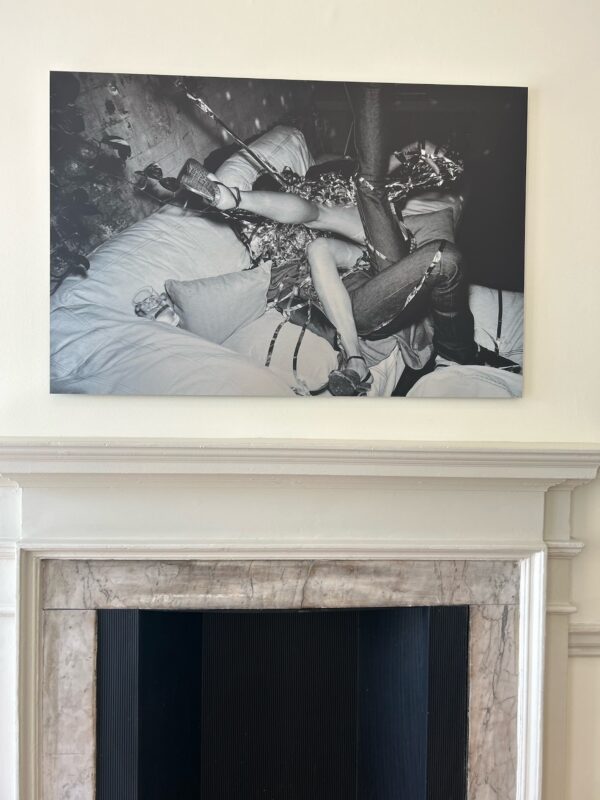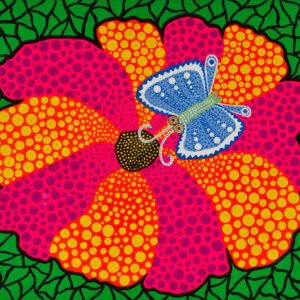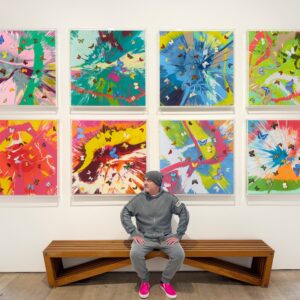Most photographs at Photo London 2024 are, unsurprisingly, of people. That may be because of who they are (the Rolling Stones again?) but more often the figures shown are either anonymous or are the artists using themselves as the subject most readily available. Here are ten images of people that are about how they are depicted, what they are doing, or what their story has been…

Omar Victor Diop and Lee Shulman / The Anonymous Project: from ‘Being There’ 2023 at the joint stand of Galerie Binome and Magnin-A, Paris
In what look like – and they are – sixty Technicolor images of ‘the American way of life’ in its 1950’s-60’s heyday, we notice that a single black figure insinuates himself mischievously into every image from what was, after all, a period of segregation. Lee Shulman preserved the slides as part of his own work as ‘The Anonymous Project’, then collaborated with the Senegalese photographer Omar Victor Diop, who works through self-portraits to take on identities questioning – with staged humour – Africa’s links with the rest of the world. He doesn’t replace figures in the originals, but fills in gaps such as an empty chair to emphasise how far from golden the golden years were in the USA.
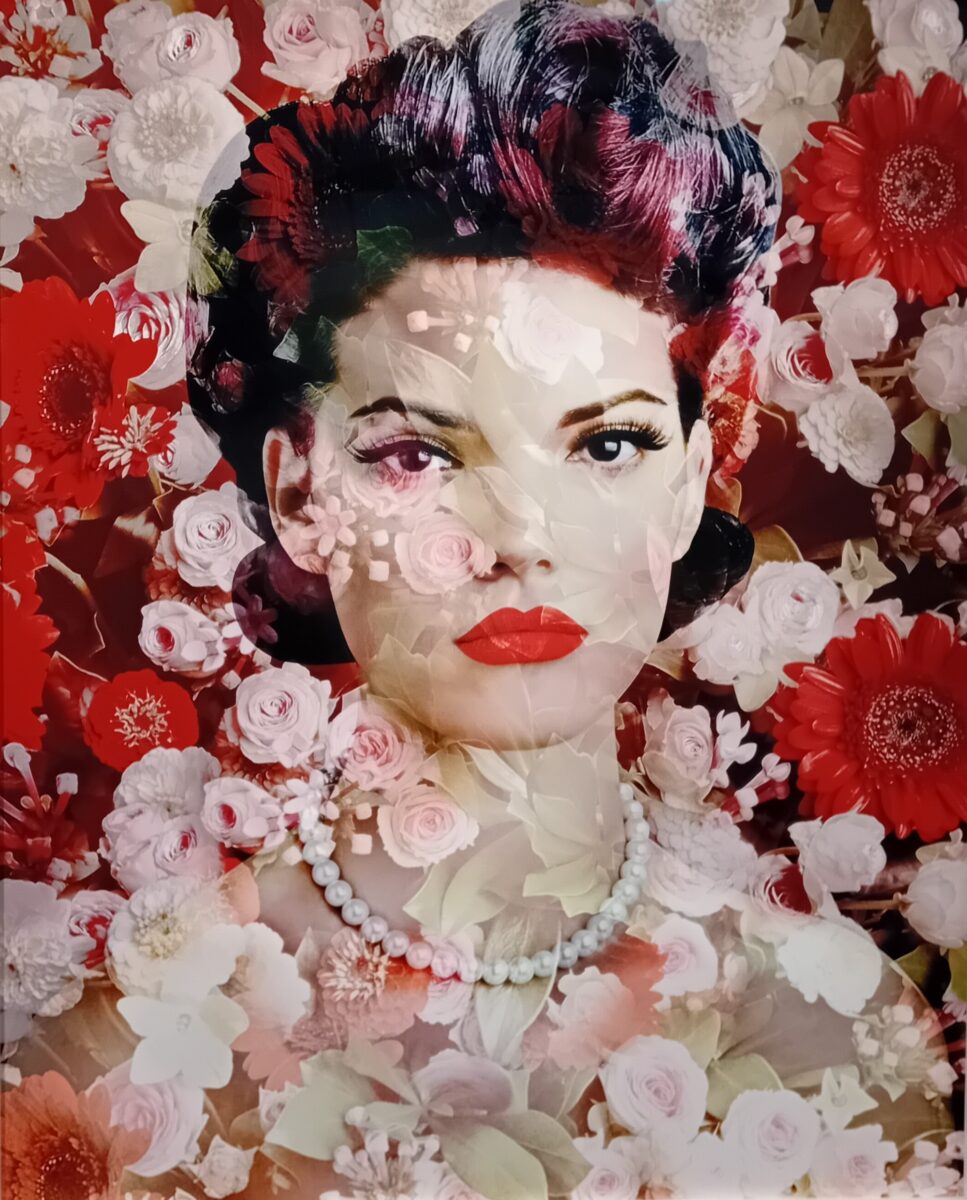
Valerie Belin: ‘Etude pour Black Eyed Susan # 7’, 2013-23 at Galerie Nathalie Obadia, Paris / Brussels
French artist Valerie Belin is, very justifiably, the ‘Master of Photography’ singled out for the main solo show this year’s fair. Her home gallery showed this 2023 update to a series made a decade earlier. Her model is styled to embody the 50’s ideal, so that the sculptural quality of the hairdos and jewellery relates to the intricate shapes of the flowers and – in Belin’s words – the ‘fusion between the figure and the vegetal elements…dissolves the stereotype in an organic, liquid flux: the icon reveals the mystery and charm of a creature coming into bloom’.
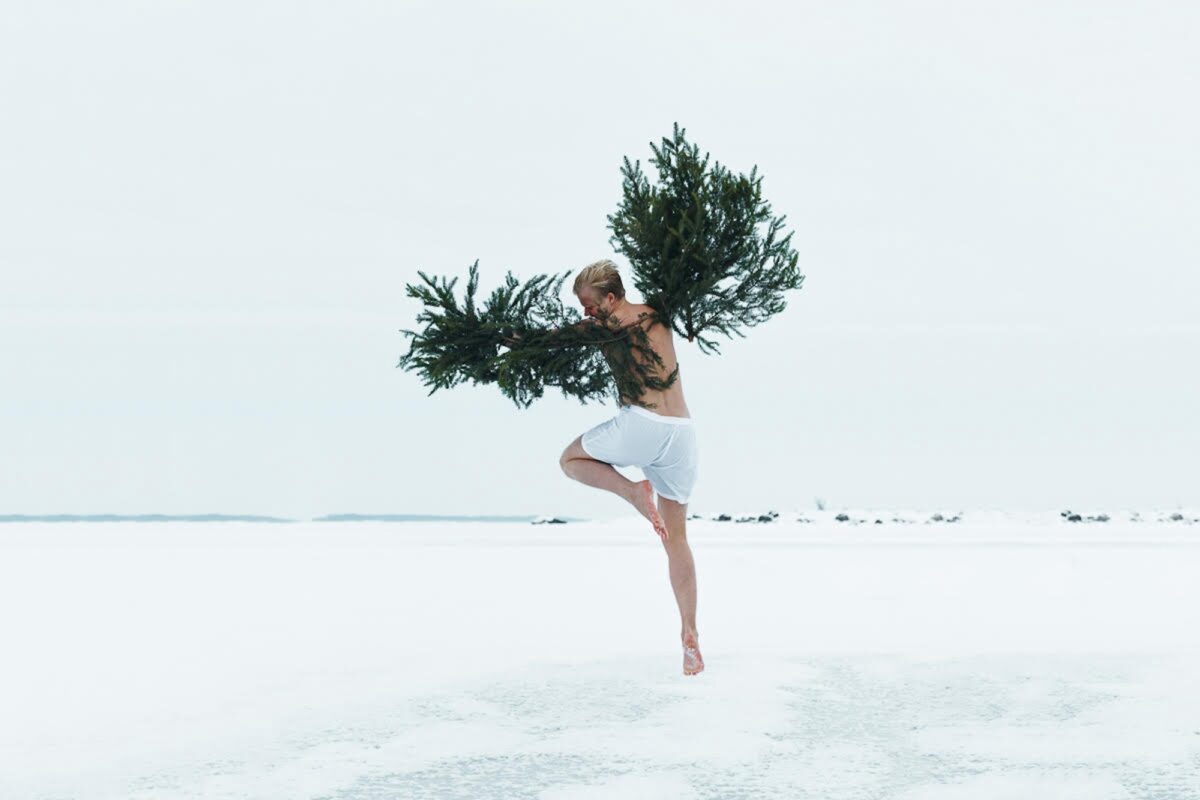
Svante Gullichsen: ‘Icarus’ 2018 at Albumen Gallery, London
Icarus prepares to ascend from the northern cold, as I see it, little knowing that the southern sun will bring him down. Svante Gullischen hikes all over Finland, identifying the best spots for his elemental performative self-portraits. Sometimes he’s naked to maximise the frisson of ice and flesh; sometimes he’s clothed to symbolic effect; here there’s something endearingly comical about his pants, as well as his evergreen wings, as he heads for a fall.
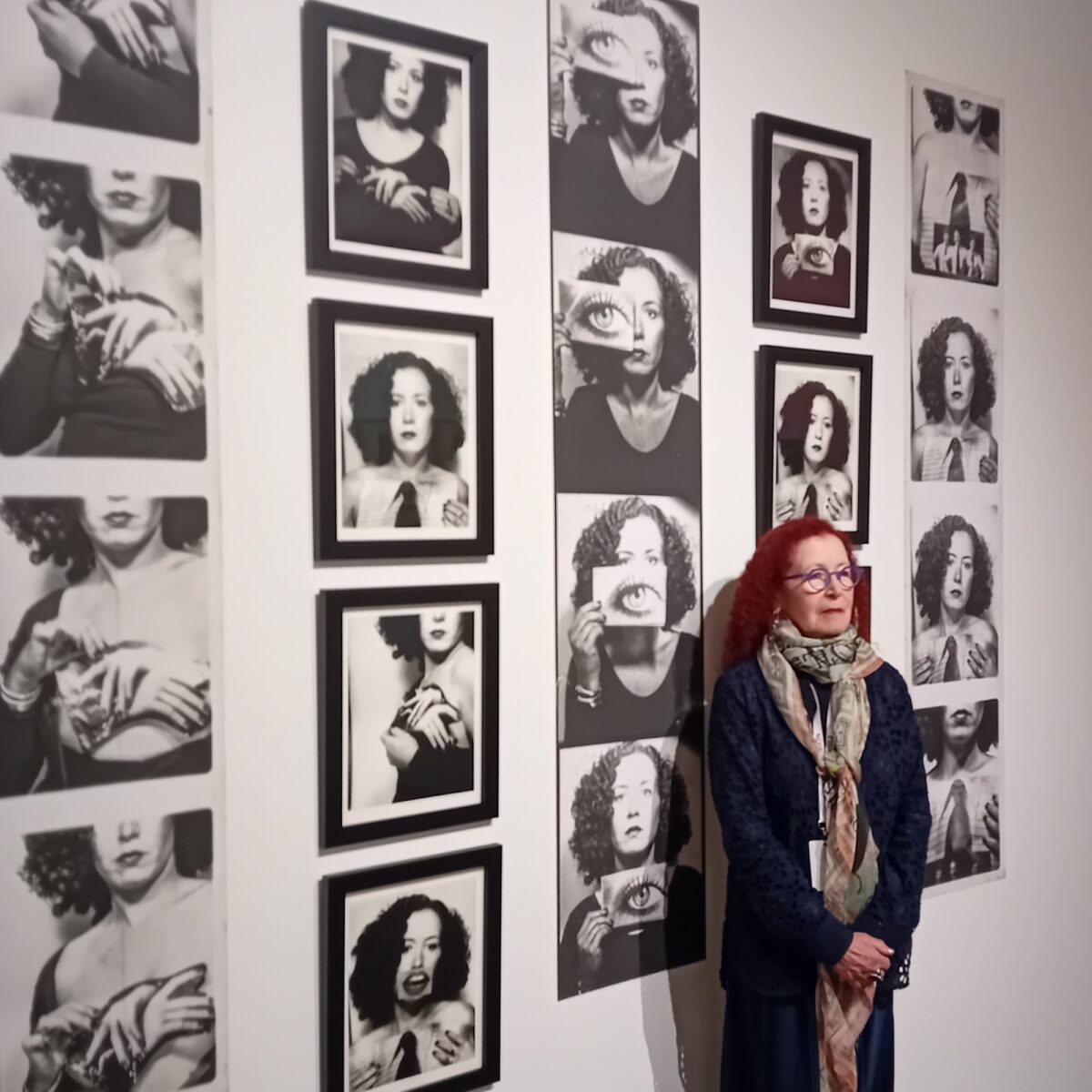
J.K. Lavin with her series ‘IF’, 1977 at Alta Vista Arts, Los Angeles
The California-based artist J.K. Levin created these self-portraits in various photobooth machines in 1977: 33 years before Instagram launched, she held up magazine adverts to foreground the effects of advertising and beauty standards on the female self-image and psyche. Looking back, she also relished the chance effects caused by the photobooths not being quite as standardised as might have been intended, and recalled that she was cheekily topless behind the page with a tie on it.
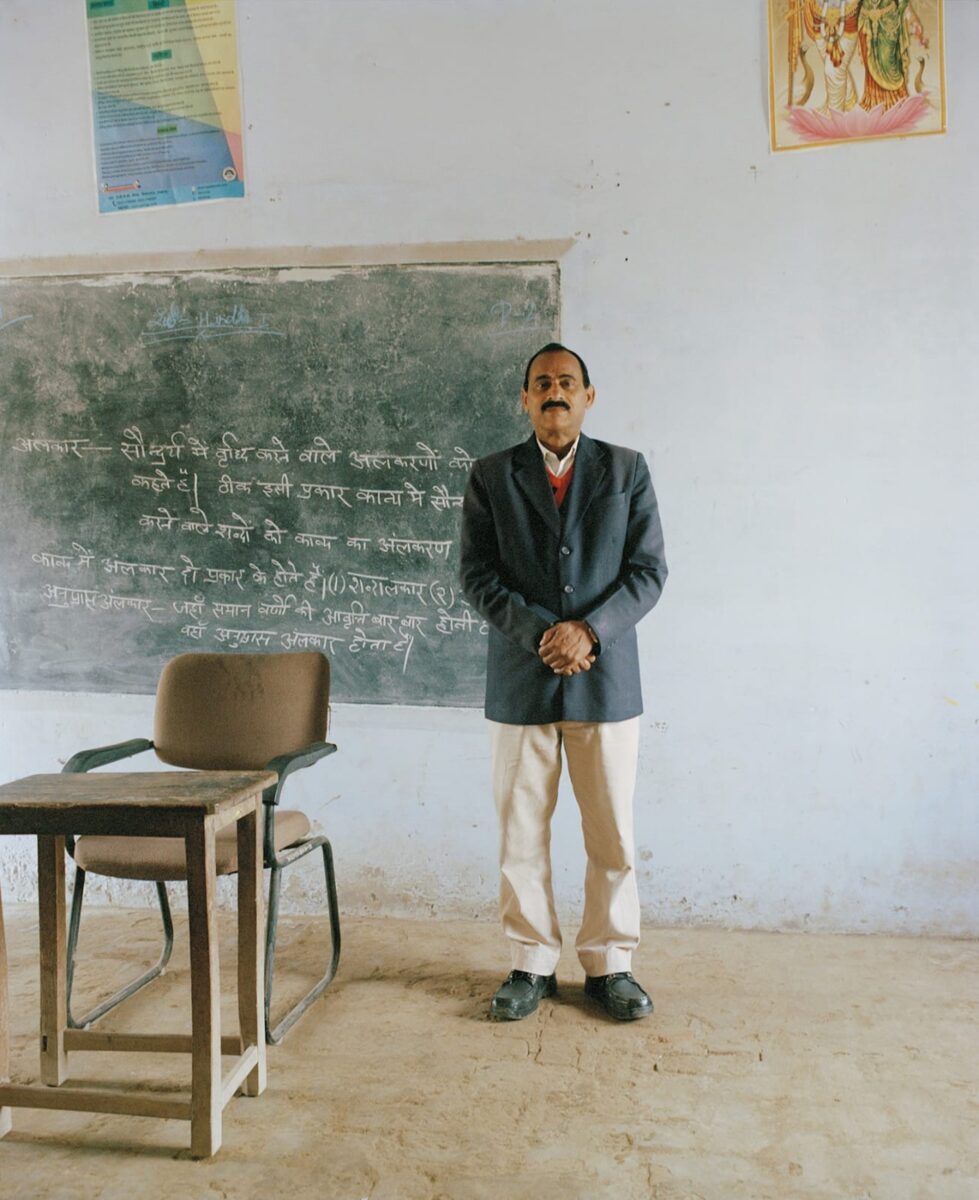
Vikram Kushwahi: from ‘The education I never had’ at Notton, London
This is from a series documenting the school that Vikram Kushwali’s father was about to retire from after teaching for 35 years in rural Uttar Pradesh, one of the poorest states in India. He had sacrificed much to send his only child to a boarding school: Kushwali says his parents ‘lived in a one room shack for 18 years while I played cricket and studied physics with the sons of diplomats’. Photographing in the school, he felt that he could so easily have followed the limited course of the children there, rather than becoming a photographer who married a foreigner and moved to London…
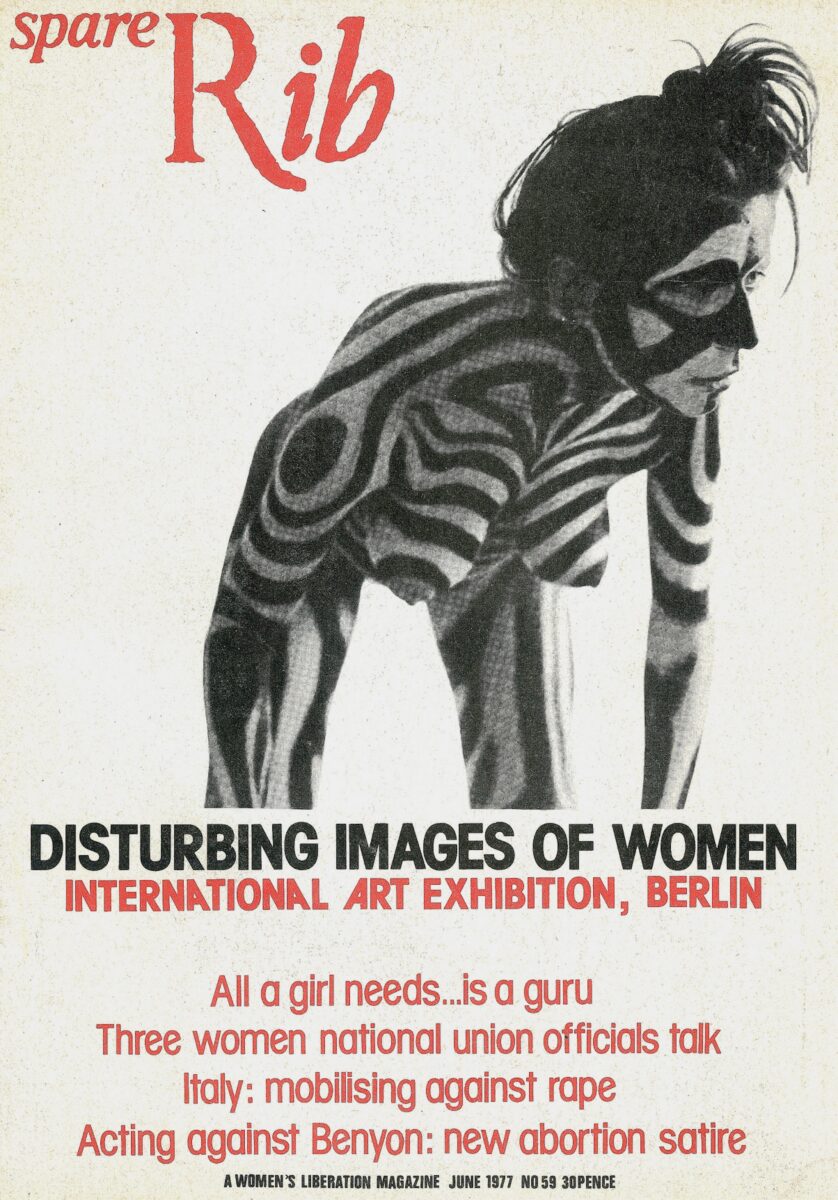
Spare Rib cover (June 1977), featuring a still by Hannah O’Shea from her film ‘ A Visual Time-Span ‘ at England Gallery, London
The photograph featured here stood out in Tate’s recent ‘Women in Revolt’. There, I rather lazily assumed it related to the Neo-Naturists’ well-known use of bodypainting, but it actually precedes that by a decade. Here the context of a feminist cover reinforces the mixture – in the film from which it comes – of physical performance, gay rights campaigning and the assertion of female power through how O’Shea painted her model to look like a wild animal.
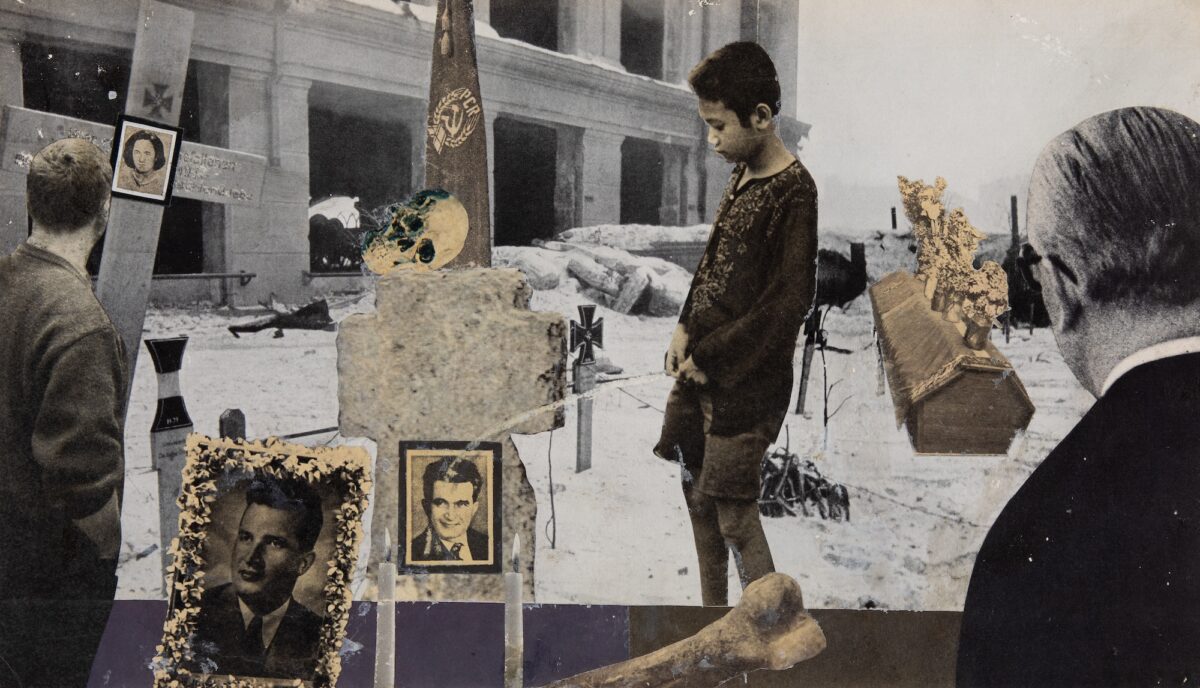
Ion Bârl?deanu: ‘Untitled’, 1990’s, at The Gallery of Everything, London
The Romanian Ion Bârl?deanu (1946 – 2021) worked as a farmer, docker, security guard and a grave-digger, all the time making clandestine collages out of magazine clippings. Many of them anatomise
the violent reign of Nicolae Ceau?escu, and its subsequent collapse in 1989. Bârl?deanu saw himself not as an artist, but as a maverick film director controlling a wide cast of characters – Mick Jagger makes one of his less expected appearances at the fair in one collage. I did wonder in which magazine he had found the youth he repurposes as paying tribute of sorts at the dictator’s grave.
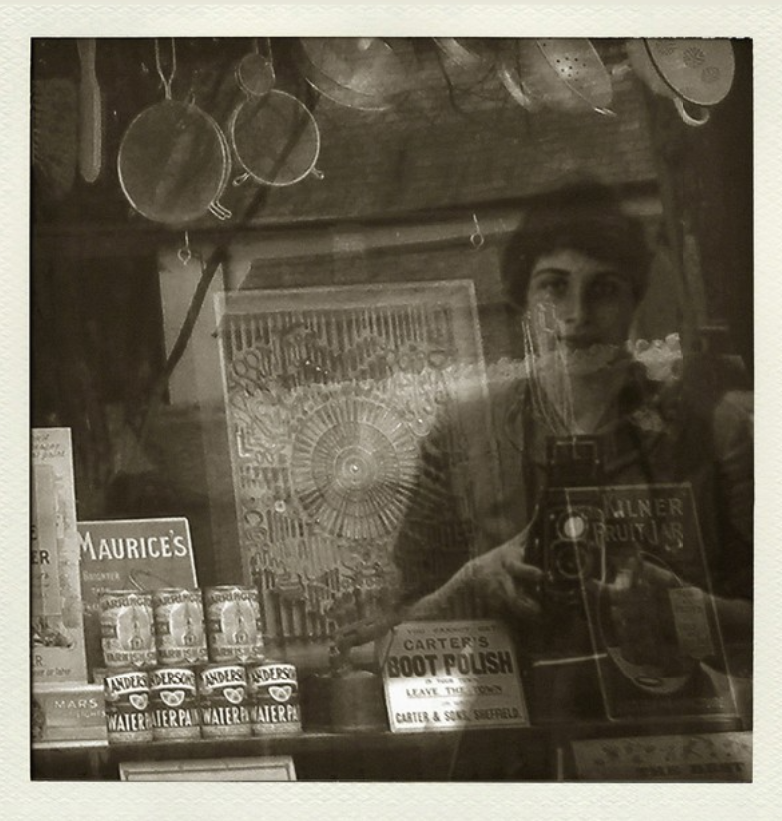
Tali Amitai-Tabib: ‘Selfie’ 2015 from the series ‘Trudl’ – 2014-15 at Galerie Olivier Waltman, Paris / Miami
Tali Amitai-Tabib traces a potential reality as a fictional life. Trudl was a cousin whom the Israeli artist never met. Forced to leave Germany in 1940, Trudl found refuge in England, where she dreamed of becoming a photographer. Intrigued, Amitai-Tabib tracked the remaining sixty years of her relative’s life working, marrying and raising a daughter in Britain, and made period-styled images of the photographs she could have taken had she realised her dream. This ‘selfie’, for example, was made by holding a photograph of Trudl against a shop window.
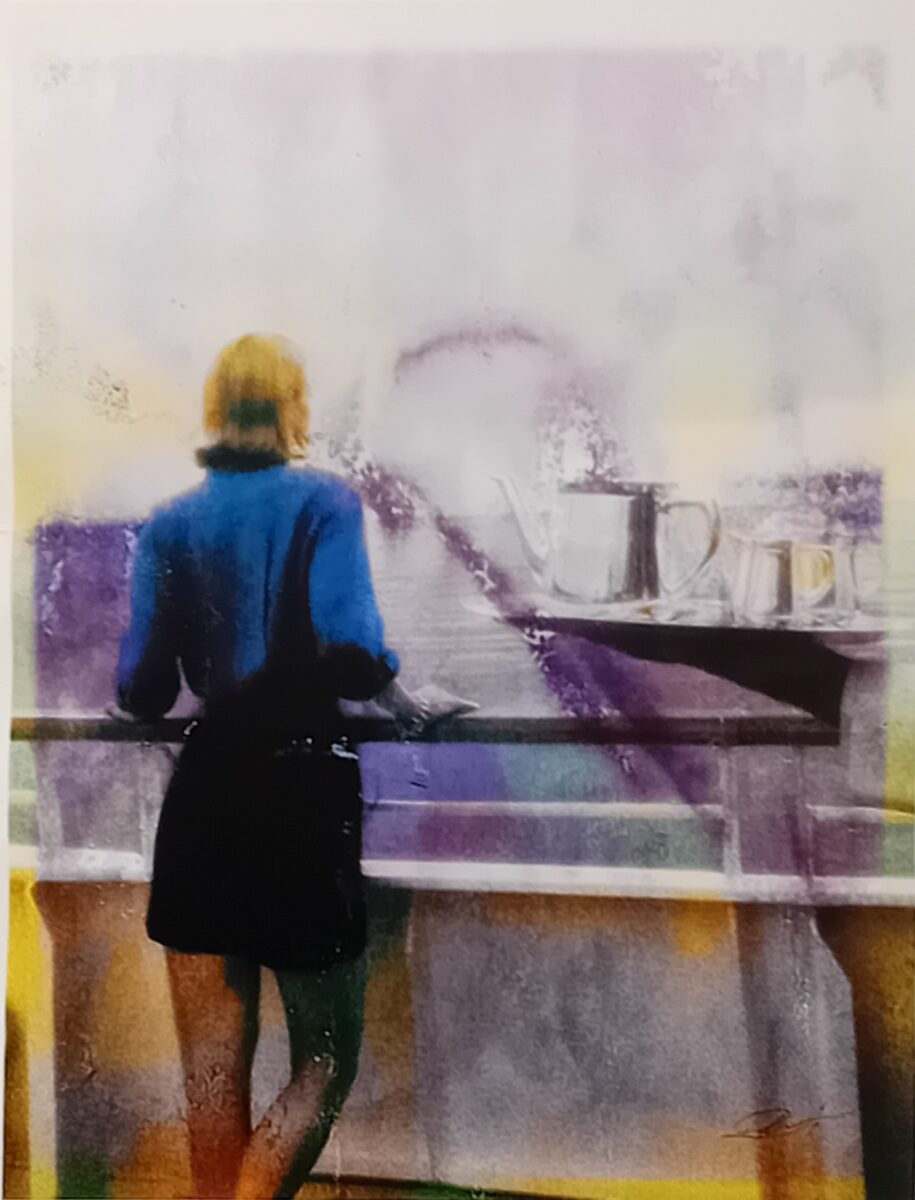
Robert Farber: from the ‘wet series’ 2018 at Echo Fine Arts, Cannes
The American Robert Farber has a forty year career in romantic-tending lifestyle, fashion, nude and landscape photography. But on April 24th, 2018, he explains, ‘my studio was flooded in the middle of the night. While excavating the ruins, I uncovered several catalogues of drenched, non-archival small prints. I separated dozens of images and found myself discarding only the unaffected ones. What I kept were these new abstractions of the originals.’ The effect is to trigger hazy memories.
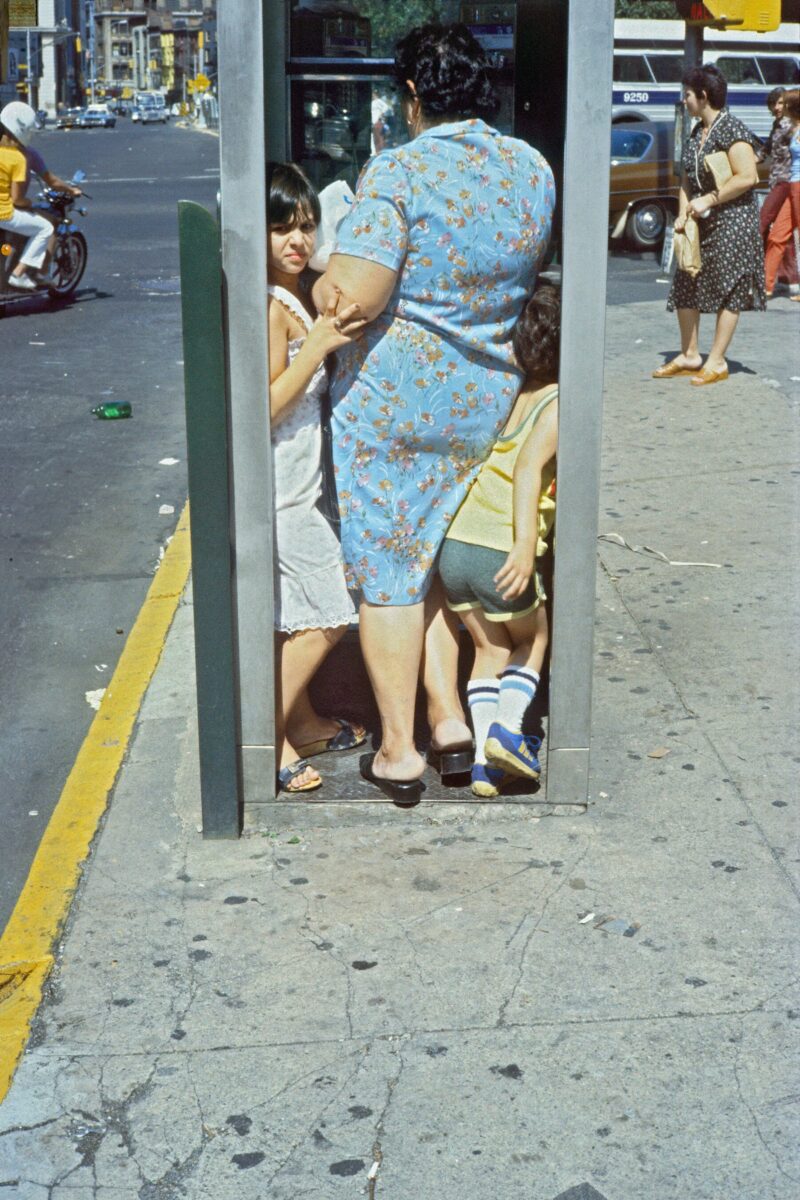
Helen Levitt: ‘New York, 1988’
Helen Levitt (1913-2009) is hardly a discovery her New York street photographs from the 50’s on are classics of the genre. That said, she’s best known for her black and white work, but was an early adapter – among art photographers – of colour. Zander’s solo stand of such work included several images newly released from the estate – selecting those that Levitt’s annotations showed an unrealised plan to print. All the same, I found myself drawn to this relatively well known picture – amusing, yet somewhat troublingly claustrophobic.
Photo London 2024, 16th – 19th May,
Somerset House


